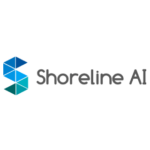Cost avoidance, a strategy touted to prevent an organization from incurring an expense or spending unnecessary money at some point in the future has been used for decades by predictive maintenance or analytics vendors as justification for using their system. Maintenance and reliability managers have in turn used it as their justification to gain approval from senior management to implement predictive technologies always pointing to failure prevention as the primary source of its benefits.
Even if it is true that predictive analytics will prevent failures, this logic has fatal flaw. Cost avoidance savings are hypothetical, they do not appear as line items in a budget on a financial. They are virtually impossible to quantify or prove. How do you quantify something that did not happen?
Early in my career, cost avoidance was my pitch—and I really believed it—for implementing predictive monitoring and analytics and in every instance, did not convince doubting executives—especially financial executives—that cost avoidance benefits would justify the cost needed to implement and keep the program. As my thought process matured, the realization that there really are no benefits in failure prevention. This realization was in three parts. First, true asset failures are a very small part of the unnecessary costs incurred by most organization. Second, that the real benefits derived from predictive and predictive analytics is process optimization—increasing throughput and reducing operating costs. Finally, the real benefit of this technology, when properly used, is the means to minimize the total cost of ownership (TCO) of capital assets and best return on the organization’s capital investment (ROIC).
By changing the focus of predictive analytics from failure prevention to operational optimization, the tangible benefits became boundless. Using the same predictive technologies, predictive analytics generates real, green-money, short-term benefits that more than justified implementation. Examples are boundless but, one client had first year benefits of $16 million, in reduced maintenance repair cost and electric power consumption costs. Their operation used 700 remote operated (MOV), horizontal splitcase pumps to transport slurry through their alumina refinery process. Their annual repair cost on these pumps was $10 million and by cutting the causal factors driving these high repair rates—knowledge generated by the predictive analytics, allowed them to reduce this by 50% or $5 million year-over-year. The analytics also found excessive electric power consumption by these pumps as a result of their mode of operation. Instead of controlling the pumps within their best efficiency and intended operating range, the pumps ran from near shut-off to run-out consuming twice the kWh as the process needed. By changing the mode of operation, they reduce consumption by half or $16 million year-over-year. A side benefit was that the entire refining process was more stable and efficient that before.
Cost savings are tangible mitigation strategies that lower existing costs or expenditures, but they are finite. There is only so much excess in any organization. To perfect the benefits of predictive analytics one must look further. Assuming an organization can sell addition volume, the obvious application for predictive analytics is supplying the actionable knowledge needed to increase throughput, as well as lower cost of goods sold. The technology is ideally suited for this task—it just has to be applied correctly. For example, one high-speed manufacturer was able to increase their overall equipment effectiveness (OEE) by more than 2% in the first year. Big deal, right? Well, a 2% improvement increase their output by 5.6 billion units the first year.
The bottom line should be clear. Cost avoidance just does not work and if it did would be insignificant compared to the real, almost boundless benefits that properly applied predictive analytics can provide.





